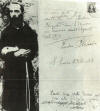5 Seraphic college, Transverberation, Stigmata
San Giovanni Rotondo
 In 1702
In 1702
 When Padre Pio moved there
When Padre Pio moved there
 In 2013
In 2013
The seraphic college
The convent of San Giovanni Rotondo included a small seminary called
“Seraphic College”. Padre Pio was assigned the direction of it, including
spiritual direction, and some teaching.[1]
Padre Aurelio Di Iorio da Sant’Elia a Pianisi studied under Padre Pio
from 1916 to 1918. Padre Aurelio reported: “He had a superficial way of
teaching. He taught history and grammar, but he knew little of the
former and none of the latter. None less we boys were attracted to him.
The key to his charm was his humanity. His sanctity was his humanity.”[2]
Padre Paolino also was his student: “He had weekly conferences were he
introduced us to the love of the Lord.”[3]
Padre Pio was so committed to help the student that he wrote to Padre
Benedetto on March 6, 1917: “I have a vivid desire to offer myself as a
victim for perfecting this college that I love tenderly.”[4]
Padre Federico Carrozza da Macchia Valfortore, another student at the
time: “He was always praying, night and day. In our midst, while talking
to us, he held the rosary in the right hand, hidden in the folds of his
habit. He spent long hours on his knees. In the refectory he took a few
mouthfuls.[5]
Twisted rod
Padre Aurelio reported that he and the other students in the seraphic
college one morning saw Padre Pio’s bed completely turned upside down
and twisted. Also, the curtain and the rod holding the iron curtain were
all twisted up like a piece of curly hair. The rod was thick as a
finger, and was all turned and twisted. “We were really scared.” When
Padre Pio came along and saw the devastation, and the students scared,
he said: “Don’t make a big deal of it. Barbablu’ messed up everything.”[6]
Vincenzo Fini, blacksmith in town, was called to repair the damage.
On July 29, 1918, Padre Pio wrote: “It has been a week that I have been
alone with the students, because Padre Paolino is out. I hope that he
will come back this evening. He will leave again on Saturday.”[7]
Spanish fever
In September 1918 the Spanish fever was still raging in Italy. In those
few weeks 200 people had died of Spanish fever in San Giovanni Rotondo.
[8]
In the college, the two dozen or so boys were almost all ill. The doctor
prescribed injections. Because he was understably overworked, the doctor
thought Padre Paolino and Padre Pio how to give the injections. Since
alcohol was not available, the doctor left some carbolic acid to
sterilize the site of the injection.[9]
Padre Pio obtained “secretly” through Maria De Vito from her cousin
Valentino Vista, a pharmacist in Foggia a little bottle with four grams
of pure carbolic acid “for the disinfection of the syringes and also
four grams of veratrine.[10]
Mons. Salvatore Bella
Towards the end of June 1920, Mons. Bella, bishop of Foggia, took to the
Holy Office the deposition of the two pharmacists who feared Padre Pio
was artificially causing the stigmata with the aforementioned drugs.[11]
Padre Pio explained it under oath to Mons. Rossi: “The secret was
requested to conceal from those who would transport it that it was a
dangerous medicine, without a doctor’s prescription. The purpose was to
disinfect the syringes. In a boarding school for boys there is often such
necessity.”[12]
Padre Ignazio da Ielsi
About the veratidine Padre Pio testified to Mons. Rossi: “I requested it
because Padre Ignazio made me sniff once such powder. I wanted to use it
during recreation. A small dose of this powder prompts immediate
sneezing.”[13]
Padre Pio’s family had also been stricken. On September 22 died Padre
Pio’s nephew Pellegrino, and on September 25 his sister Felicita, the
mother of Pellegrino, died of Spanish fever too. Padre Pio’s mother also
contracted the illness and for weeks was gravely ill.[14]
Padre Pio had it in moderate form, and was sick in bed for September 5
through the 16th. He restarted celebrating mass on September
17.[15]
Because most of the friars were in military service,
at that time the convent
consisted of three friars: Padre Paolino, superior, Padre Pio, and
Brother Nicola alms seeker. There were also a dozen of young students of
the seraphic college.
[16]
Transverberation
of the heart
Transverberation of St. Theresa
Transverberation is a wounding of the heart, as a reward by God for
loving Him. It manifests itself by physically passing through the heart.[17]
Several saints experienced the transverberation. Some few names: Theresa
of Avila, Therese of Lisieux, Veronica Giuliani, Marguerite Marie
Alacoque, Gerardo Majella, Joseph of Cupertino, Francis de Sales, Philip
Neri, Jane Francis de Chantal, Lutgarde, Charles of Sezze.
On August 5-7, 1918 and in December 1918 Padre Pio had transverberation
of the heart.
Transverberation of Padre Pio
Padre Pio described under obedience his transverberation in a letter to
Padre Benedetto on August 21, 1918:
"The evening of the fifth I was hearing the confessions of the boys,
when a celestial personage, holding a very long sharp pointed steel
blade which seemed to emit fire, hurled it into my soul with all is
might.
All done in a split of a second everything in my inside was lashed by
fire and steel. I felt I was dying. I asked the student to leave,
because I was not feeling well and I didn’t have any strength to
continue.
The agony continued without ceasing until the morning of August 7. From
that moment on I feel an open wound which causes me to suffer continual
pain."[18]
Padre Federico Carozza da Macchia Valfortore, a capuchin friar himself,
in later years revealed that he was the student present at the
transfiguration of Padre Pio. He didn’t tell anybody to avoid becoming
center of attention. He was in the college also at the time of the
stigmatization.
Padre Agostino wrote to Padre Pio on August 24, 1918: “August 6 was the feast of the Transfiguration. Jesus wanted to transfigure your spirit and inflict on you a wound that only He can heal.”[19]
Padre Benedetto on August 27: “All that happens in you is a consequence
of love, of the vocation to be co-redeemer.”[20]
After the Transverberation Padre Pio was left into “the dark night of
the soul” for several weeks. God seemed to have abandoned him.[21]
The stigmata are the bodily wounds on the hands, feet and side
corresponding to those inflicted on Jesus at the Crucifixion. Notable
stigmatics were Francis of Assisi, Rita of Cascia, John of God, Gemma
Galgani, Veronica Giuliani, Catherine of Siena.
Saint Francis of Assisi received the stigmata on Saturday September 14,
1224, feast of the triumph of the Cross, on Mount Verna, town of Chiusi
della Verna, in Tuscany, Italy.
The spot were Padre Pio was kneeling when he received the wounds.
The flowers and the painting indicate the spot. The sign under the window explains the event.
The stigmatization of Padre Pio happened the morning of September 20,
1918, between 9 and 10.
Padre Pio was praying in the choir after Mass.
[22]
He was alone, kneeling on the upper row of stalls near the window,[23]
on “the vicar’s bench”.[24]
clean up.[25]
The Crucifix in the choir has four nails, two for the hands, and two for the feet.
Instead of the customary three.[26]
Padre Pio did not tell anybody about the stigmata.
How did people around him find out?
Brother Nicola da Roccabascerana was in the countryside in search of
alms[28]
[29]
or in the kitchen[30].
The students had a vacation day and were staying in the backyard.
[31]
Filomena Ventrella
The first to notice the stigmata were the devout women in church.[32]
Vittoria Ventrella
One of his spiritual daughters, Vittoria Ventrella, reported that “My
sister Filomena went to the convent on September 20, 1918, and was the
first to notice that the Padre had received the wounds, because she saw
on his hands the red marks similar to the marks that we see on the
statue of the Sacred Heart. She came home and told us.”[33]
Nina Campanile
Another spiritual daughter, Nina Campanile, went to the convent the
morning of September 21, to give Padre Pio an offering for a Mass to be
said by Padre Pio. In the sacristy, when she gave the offering she
noticed a red mark on the back of his hand. She said: “Padre, did you
burn your hand?” He did not
answer. But when she tried to kiss the hand Padre Pio said: “If you only
knew the embarrassment you cause me!”[34]
When Nina returned home, she told her mother that Padre Pio has the
stigmata like St. Francis of Assisi.[35]
The next day, the 22nd, Nina went to the convent again and told the superior: “Padre Paolino, do you know that Padre Pio has the stigmata?” Padre Paolino smiled incredulously.[36]
Maria Campanile later committed to paper her memories of those days.[37]
Filomena Ventrella too went to Padre Paolino to inform him that
Padre Pio had the stigmata.[38]
Padre Paolino
Padre Paolino da Casacalenda
Padre Paolino’s testimony: “I started thinking: “How can be possible
that Padre Pio has received the stigmata without me realizing it? I am
always with him’. I went in Padre Pio’s room without knocking at the
door. He was writing at the desk. When he saw me he got up. I asked him
to continue writing. I got closer, and first saw the wound on the back
and on the palm of the right hand. Then I saw the one on the back of the
left hand. The same day I wrote to Padre Benedetto, Provincial in San
Marco La Catola, telling him what I had seen, and asking him to come to
San Giovanni Rotondo as soon as possible. To my astonishment and
disappointment he didn’t come. He sent me a letter where he seemed not
to give importance to what had happened. He only recommended me to keep
absolute silence over the issue.”[39]
[40]
Padre Emilio da Matrice
Padre Emilio da Matrice
Emilio da Matrice, at that time a fifteen years old student of the
Seraphic College, testified: “The morning of September 21, 1918, as soon
as we approached Padre Pio, we realized he had a wound on the palms of
his hands, and was walking with a certain difficulty. We learned only a
few days later, from Padre Paolino, that he had received the Lord’s
wounds from
the Crucifix in the choir.”
Padre Benedetto
In a letter to Padre Benedetto on October 17, 1918, about a month after
the event, Padre Pio gave him a hint: “A mysterious individual wounded
me all over. Please come help me.
All my inside rains blood and I am forced to see it flow outside.
For pities sake I beg that ceases
this torment, this condemnation,
this humiliation, this confusion!”
[42]
Padre Benedetto was in San Marco La Catola. He didn’t go to San Giovanni
Rotondo as requested, but sensed what had really happened, and wrote to
Padre Pio on October 19: “Tell me exactly what happened. I want know
thoroughly everything, under holy obedience.”[43]
Padre Pio wrote to Padre Benedetto under obedience on October 22:
“It was the 20th of last month and I was in the choir after
Mass. It was
the Friday after the feast of the stigmata of Saint Francis. Suddenly I
was wrapped in a sea of blazing light. In that light I saw a mysterious
individual, similar to the one I had seen the evening of August 5. He
had hands, feet and side dripping blood. From his wounds came rays of
very bright white light that penetrated my hands, my feet, and my side.
They were like blades of fire that penetrated my skin piercing, cutting,
and breaking. I felt that I would die. The pain was immense. The wounds
were bleeding, especially the one on the side of the heart. I had barely
the strength to drag me to my cell to clean my clothes all soaked in
blood." Padre Pio concludes:
“Oh my God, how much
confusion
and humiliation I feel in having to show what You have done in this
poor creature of yours!”
[44]
Second Transverberation of the heart
On December 20, 1918, Padre Pio wrote to his spiritual director Padre
Benedetto: “For several days I have been feeling like an iron blade
penetrated the lower part of my heart and extended transversally to the
right shoulder. It gives me an atrocious pain and doesn’t let me rest.
What is this? This new phenomenon has started after I saw the same
mysterious personage that I saw on August five and six and in September;
of which I have written to you, if you remember, in other letters.”[45]
According to the experts of mysticism this was the final seal of love,
were Padre Pio was completely transformed in a living image of Jesus.[46]
Padre Paolino da Casacalenda, the superior of Padre Pio, examined
repeatedly the chest wound, and reported in his memories: “The wound on
the left side of the chest has the form almost of an X. From that fact,
one has to deduct that the wounds are two.”[47]
Picture of the wounds on the hands
Padre Placido Bux da San Marco in Lamis testified: “I was in the
military when Padre Pio received the wounds. I went to the convent ten
months later, in May 1919. I was a classmate of Padre Pio, and very
close to him. I asked to take a picture of the hands. Padre Pio made a
great effort to please me, and removed the gloves. The negative of the
picture was on glass. I made a copy just in case. Padre Pietro da
Ischitella, provincial superior, took the glass negative with him, but
the glass broke on the way to Foggia. Luckily I had the copy. Later I
made many copied for my friends.[48]

Padre Placido Bux
Certificate of authenticity by Padre Placido
Soon after the stigmatization
The wounds created uneasiness in Padre Pio and in the friars. Padre Pio
had to continue his daily routine with the student of the seraphic
college, while dealing with the excruciating pain and the dripping of
the blood. He started wearing a green shawl trying to hide the hands
under it. For mass he used a vestment with extra-long sleeves, than he
used full woolen gloves, and then half gloves. He would remove them
before the Canon and put them back after communion.
On the side wound he put a linen cloth, and on the feet he
started wearing socks. As he was suggested, he put iodine on the wounds
to stop the bleeding.[49]
Padre Pio’s humility, simplicity and obedience were unchanged. He would say to Padre Agostino: “Pray and have people pray for my conversion.”[50] He went through desolation, aridity and scruples. “I see only
darkness
in my soul. Who knows if God is happy with me.”[51]
Care of the wounds
Padre Pio to Mons. Rossi, inquisitor sent by the Holy Office, on June 15, 1921: "Initially, I would use some iodine every once in a while, but a doctor told me to stop, since it could irritate them even more. They had me to use a little petroleum jelly when the sores would lose their scabs; I used it several times, but I haven't in a long time. It may be over two years that I have used nothing at all." (Cas11, 202)
The doctor Padre Pio is referring to is Dr. Bignami. He visited Padre Pio at the end of July 1919. (Ger95, 173, Note 1)
Padre Placido Bux da San Marco in Lamis took the only picture of the hands of Padre Pio without gloves, on August 19, 1919. There are no signs of any treatment applied. (Ger95, 70)
Padre Joseph Pius
Brother Bill Martin, before becoming Padre Joseph Pius
Padre Joseph Pius, Bill Martin before becoming a Capuchin friar,
reported in later years: “The wounds were in the center of the palm, and
the coagulated blood covered the whole hand. The blood was always
running out of the holes. It is true that if you were very close and
there was a light behind his hand you could see a light shining through
the holes. Mrs. Emilia Sanguinetti, said that when Padre Pio celebrated
Mass and held up his hands to bless people, she would see the light
through his hands. His feet were always very swollen. They were like
melons under his socks, one more swollen than the other. On the last day
I did find white crusts with a tone of pink, very pale pink, after last
Mass on September 22. I took them away. When he died there were no
scars.”[52]
Bibliography
Agostino da S. Marco in Lamis. (2012).
Diario. San Giovanni Rotondo: Edizioni Padre Pio.
Ago12
Alessando da Ripabottoni (Saint Pio of Pietrelcina. Everybody's
Cyrenean). 2010. San Giovanni Rotondo: Edizioni Padre Pio.
Ale10
Allegri, R. (1998). Padre Pio, un santo tra noi. Milano: Edizioni
Mondadori.
Alle98
Andrea, G. S. (2008). Padre Pio. L'ultimo sospetto. Edizioni
Piemme.
Gae08
Capuano, P. (2012). Con p. Pio: come in una fiaba. Foggia:
Grafiche Grilli.
Cap12
Casacalenda, P. P. (1978). Le mie memorie intorno a Padre Pio.
San Giovanni Rotondo: Edizioni Padre Pio.
Paol78
Castelli, F. (2011). Padre Pio under investigation. The secret
Vatican files. San Francisco: Ignatius Press.
Cas11
Chiron, Y. (1999). Padre Pio. Una strada di misericordia. Milano:
Figlie di San Paolo.
Chi99
DeLiso, O. (1962). Padre Pio. New York: All Saints Press.
DeL62
Duchess Suzanne, o. S. (1983). Magic of a Mistic. Stories of Padre
Pio. New York: Clarkson N. Potter.
Duc83
Flumeri, Gerardo da (1995). Le stigmate di Padre Pio, Testimonianze e
relazioni. Edizioni Padre Pio.
Ger95
Giannuzzo, E. (2012). San Pio da Pietrelcina. Il travagliato persorso
della sua vita terrena. Book sprint edizioni.
Gia12
Ingoldsby, M. (1978). Padre Pio. His Life and Mission. Dublin:
Veritas Publications.
Ing78
Malatesta, E. (1999). La vera storia di Padre Pio. Casale
Monferrato: PIEMME.
Mal99
Mortimer Carty, f. C. (1973). Padre Pio the stigmatist. TAN
Books.
Mor73
Napolitano, F. (1978). Padre Pio of Pietrelcina. A brief biography.
San Giovanni Rotondo: Edizioni Padre Pio.
Nap78
Peroni, L. (2002). Padre Pio da Pietrelcina. Borla.
Per02
Pietrelcina, P. P. (2011). Epistolario I Corrispondenza con i
direttori spirituali (1910-1922). San Giovanni Rotondo: Edizioni
Padre Pio.
Epist. I
Pietrelcina, P. P. (2012). Epistolario IV, corrispondenza con diverse
categorie di persone. San Giovanni Rotondo: Edizioni Padre Pio.
Epist IV
Preziuso, G. (2000). The life of Padre Pio between the altar and the
confessional. New York: Alba House.
Pre00
Pronzato, A. (1999). Padre Pio, mistero doloroso. Editore
Gribaudi.
Pro99
Riese, Fernando da (2010). Padre Pio da Pietrelcina crocifisso senza
croce. San Giovanni Roronto: Edizioni Padre Pio.
Fer10
Ruffin, C. B. (1991). Padre Pio: the true story. Huntington,
Indiana: Our Sunday Visitor, Inc.
Ruf91
Schug, J. O. (1987). A Padre Pio Profile. Petersham, MA: St.
Bedès Publications.
Sch87
Winowska, M. (1988). Il vero volto di Padre Pio. Milano: Edizioni
San Paolo.
Win88
[1] Gia12, 105
[2] Scg87, 112
[3] Gia12, 105
[4] Epist. I, 874
[5] Pre00, 87
[6] Sch87, 116-7
[7] Epist. I, 1054
[8] Gia12, 127
[9] Ruf91, 153
[10] Gia12, 203-4
[11] Cas11, 63
[12] Cas11, 223 and 204-5
[13] Cas11, 205
[14] Ruf91, 156
[15] Fer10, 133
[16] Gia12, 127
[17] Ale10, 84
[18] Epist. I, 1065
[19] Epist. I, 1068
[20] Epist. 1, 1068
[21] Duc83, 50
[22] Gia12, 128
[23] Per02, 248
[24] Ruf91, 155
[25] Per02, 248-252
[26] Ing78, 66
[27] Fer10, 134
[28] Fer10, 134
[29] Gia12, 127
[30] Per02, 252
[31] Pre00, 105
[32] Cas11, 154
[33] Ger95, 141-2
[34] Ger95, 143-4
[35] Pre00, 109-10
[36] Ger95, 143-4
[37] Ruf91, 163
[38] Ruf91, 154
[39] Pro99, 91-4
[40] Paol78, 70-75
[41] Cas11, 297
[42] Epist. I, 1090-1
[43] Epist I, 1091
[44] Epist. I, 1093
[45] Epist. I, 1106
[46] Gia12, 135-6
[47] Epist. I, 151
[48] Ger95, 70
[49] Gia12, 139
[50] Ago12, 58
[51] Ago12, 58
[52] Sch87, 62-3










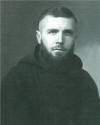
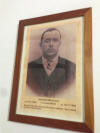

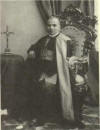
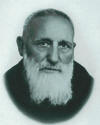

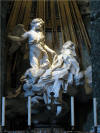
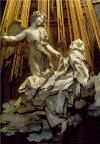
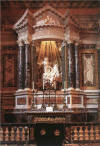


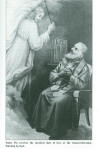



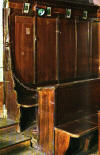
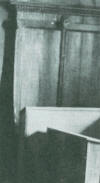
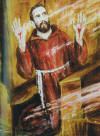
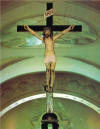
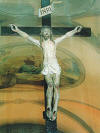

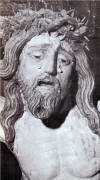
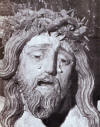

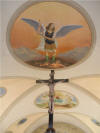
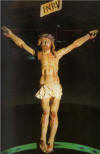
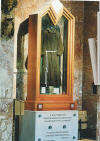
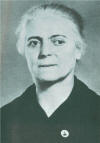
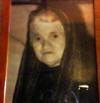

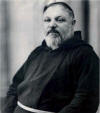
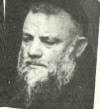
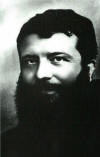


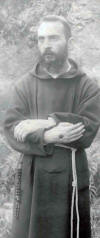
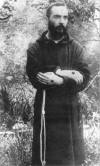
_small.jpg)


